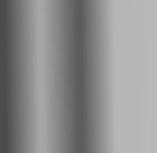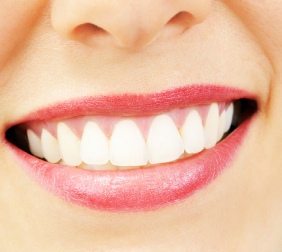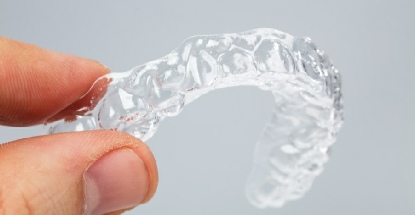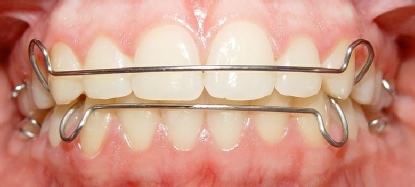

Patient Information: Orthodontics: This page is under construction
The four options to move your teeth:
1. Conventional fixed appliance (from £1450);
2. Lingual fixed appliance;
3. Removable appliances;
4. Clear aligners
“ Orthodontic treatment leaves the patient with a smile they are proud of. They can be reassured that when the camera man says calls for cheese they will have the perfect smile. It’s a treatment options for all ages. I worked at specialist Orthodontic practice for over 7 years. I was part of a team which would complete 350 braces a year. The majority of these treatment were completed using conventional fixed and removable appliances on teenagers. This has given me a a solid base of experience in orthodontics. You should always keep in mind the teeth are surrounded by bone which will re-

Bare Dental Clinic
patient information

Leaflets


price list
A fixed appliance is the classic train track appliance. Small blocks (brackets) are glued to the teeth at the front of your mouth. Sometimes teeth at the back have metal bands pushed over them to support the brace during chewing. Once the top and bottom teeth have some sort of attachment it is time to time place a wire between the brackets and hold them in place with small elastic bands called ligatures.

Every 6 to 8 weeks the wire and ligatures are replaced. Eventually the wire unravels the teeth, the brackets are removed and the teeth cleaned. Not all brackets are metal, white/clear brackets are more aesthetic and are available
How long does it take?
The period of time it takes a for this process differs with patients. For a teenager with soft bone on average the process takes 18 months to three tears. The harder bone of adults prolongs the treatment which can add an extra 12 months
Does it hurt?
Fitting the brace takes upto an hour and is painless. Every time a new wire is fitted to the brace your teeth may be tender for 12 hours after the procedure. Using the same painkiller you would use for a headache will help to overcome this discomfort.
Conventional fixed Labial Appiance appliance
Clear Aligners
Clear aligners are the latest evolution in moving teeth. From a mould of your teeth clear trays are made. The trays are made with a 3D printer. A computer image is used to make small adjustments to the tray to move individual teeth. Each trays is worn all day except when eating or cleaning you teeth. The teeth move after a week or more and then the next trays is used until the teeth have moved. They are not a direct replacement for a conventional fixed appliance and are suited for small movements of teeth often used to treat patients who have some relapse from previous orthodontic treatment.
Prices from £750. See price list
Further information click here: K Line aligners
Removable Appliances
A removable appliance is brace which can be taken out. They can be used for many different tooth position problems from moving individual teeth with custom made springs to influencing the growth of a jaw in a adolescent. They require fastidious wearing in order to be effective. They can not be used for all teeth position problems and are sometimes used as an initial treatment prior to a conventional fixed appliance.

Lingual means tongue. A fixed lingual appliance is similar to a conventional fixed appliance accept it sits on the surface of the tooth which is nearest to the tongue. This means it can’t been seen. It takes a similar period of time to a conventional fixed brace. The bracktes can irritate your tongue initially. The brackets and wires are custom made and as a result this increases the cost of the treatment.
Lingual Fixed Appliance
Retainers
Retainers are a removable brace which is worn at the end of your brace treatment. They are used to hold teeth in position. After the teeth have been moved and your active treatment stage is complete the teeth still want to move. They will always want to move out of the perfect position.
After the active treatment is stopped the teeth begin to set into position, in the bone. This process can take six months or more. Initially the teeth would move out of position quickly. So you would wear the retainers all the time after this period you need only wear the retainers for less of the day.
In order to keep your teeth in the perfect position you will always need wear retainers for a portion of the week.
There are three types of retainers.
- Ones with wires (Hawley Retainer).
- A thin clear gum shield type (Essix Retainer)
- A wire glued behind the front teeth (bonded retainer).



Palatal Expansion Device
Palatal expansion device is used to increase the width of the top jaw. Many factors may contribute to the narrowing and collapse of the palate into the mouth. Re-
This process can be undertraken as child or adolescent. Unfortunalety the process is time limited. In adults surgery would be required to accomplish the expansion. The types of brace used to accomplish the width increase in the top jaw can be removeable or fixed onto the teeth. A screw or spring is tightened to apply pressure to the teeth. The process usually takes between six and eighteen months. This type of movement of teeth has a propensity to relapse so requires careful monitoring and fastidious use of retainers.
This video shows a quad helix expander
TADS ( Temporary Anchorage Devices)
Temporary Anchorage devices or TADS are used to provide control for the movement of teeth. Moving teeth in the jaw bone requires force. Just as when two people holding hands pull each other together both of them come closer together unless one is larger than the other. The same happens with teeth. TADs provide the strongest resistance to force. The are small screws or piercings into the bone to which the brace is tied to. The insertion of TADS requires an injection. They can be placed at the same time as extractions. Afterward you should expect a dull ache for a day or two. At the end of your treatment the device is removed. This usually requires an injection.
Nance Anchorage Device
A Nance device is best decribed as a mouth anchor. It fit on the top teeth and prevented the teeth at the back of the mouth moving out of position. It can be used with various orthodontic treatment plans. It most commonly used when attempting reduce the degree by which upper teeth ‘stick out’. This treatment options is when we are attempting to camouflage the differences in sizes of top and bottom jaws which results in upper teeth sitting relatively forward to the lower jaw. One or two teeth are removed and a tug of war is started between the front and back teeth. To ensure the front teeth are ‘pulled back’ the anchor prevents the forward movement of the teeth at the back of the mouth. This can be archieved in some cases by using TADS alone or in conjunction with a Nance.
Fitting a Nance requires three to four appointments with impressions and seperators.
Separator elastics
Separator elastics are used to push teeth apart to create a small space between them. This can be to help fit a metal band around the tooth or maybe to allow a stubborn toot to move in to place. They are placed with floss or a special instrument by stretching a small elastic band until it is very thin. Then the band is slid between the teeth, like floss. As the elastic band returns to its shape it pushes the teeth apart the process takes a couple of days to a week. It is generally described at a feeling of food between the teeth. When the device is ready the separator bands are removed and the device fitted. In the photograph below you can see the separator band being stretched before seating and a photo of the separator in place
Inter Arch Elastics
Inter arch elastics are elastic bands used between the teeth. They connect the top brace to the bottom brace or two separate teeth together.
The elastics are attached to hooks on the brace. Your dentist will show you where they are and how to place them. You should follow the instructions from your dentist on how and when to wear the elastics. We see the best results when the elastics are worn as requested.
If you run out of elastics phone reception and they can arrange for you to collect some more.
Twin blocks
Palatal expansion device is used to increase the width of the top jaw. Many factors may contribute to the narrowing and collapse of the palate into the mouth. Re-
This process can be undertraken as child or adolescent. Unfortunalety the process is time limited. In adults surgery would be required to accomplish the expansion. The types of brace used to accomplish the width increase in the top jaw can be removeable or fixed onto the teeth. A screw or spring is tightened to apply pressure to the teeth. The process usually takes between six and eighteen months. This type of movement of teeth has a propensity to relapse so requires careful monitoring and fastidious use of retainers.
This video shows a quad helix expander
Habits: Tongue thrusts & digit sicking
Palatal expansion device is used to increase the width of the top jaw. Many factors may contribute to the narrowing and collapse of the palate into the mouth. Re-
This process can be undertraken as child or adolescent. Unfortunalety the process is time limited. In adults surgery would be required to accomplish the expansion. The types of brace used to accomplish the width increase in the top jaw can be removeable or fixed onto the teeth. A screw or spring is tightened to apply pressure to the teeth. The process usually takes between six and eighteen months. This type of movement of teeth has a propensity to relapse so requires careful monitoring and fastidious use of retainers.
This video shows a quad helix expander
Cleaning your brace
Palatal expansion device is used to increase the width of the top jaw. Many factors may contribute to the narrowing and collapse of the palate into the mouth. Re-
This process can be undertraken as child or adolescent. Unfortunalety the process is time limited. In adults surgery would be required to accomplish the expansion. The types of brace used to accomplish the width increase in the top jaw can be removeable or fixed onto the teeth. A screw or spring is tightened to apply pressure to the teeth. The process usually takes between six and eighteen months. This type of movement of teeth has a propensity to relapse so requires careful monitoring and fastidious use of retainers.
This video shows a quad helix expander
Barrel Shaped Teeth, small teeth large teeth
Palatal expansion device is used to increase the width of the top jaw. Many factors may contribute to the narrowing and collapse of the palate into the mouth. Re-
This process can be undertraken as child or adolescent. Unfortunalety the process is time limited. In adults surgery would be required to accomplish the expansion. The types of brace used to accomplish the width increase in the top jaw can be removeable or fixed onto the teeth. A screw or spring is tightened to apply pressure to the teeth. The process usually takes between six and eighteen months. This type of movement of teeth has a propensity to relapse so requires careful monitoring and fastidious use of retainers.
This video shows a quad helix expander
Making Space: IPR & Extractions
Palatal expansion device is used to increase the width of the top jaw. Many factors may contribute to the narrowing and collapse of the palate into the mouth. Re-
This process can be undertraken as child or adolescent. Unfortunalety the process is time limited. In adults surgery would be required to accomplish the expansion. The types of brace used to accomplish the width increase in the top jaw can be removeable or fixed onto the teeth. A screw or spring is tightened to apply pressure to the teeth. The process usually takes between six and eighteen months. This type of movement of teeth has a propensity to relapse so requires careful monitoring and fastidious use of retainers.
This video shows a quad helix expander
Camouflage Treatment
Palatal expansion device is used to increase the width of the top jaw. Many factors may contribute to the narrowing and collapse of the palate into the mouth. Re-
This process can be undertraken as child or adolescent. Unfortunalety the process is time limited. In adults surgery would be required to accomplish the expansion. The types of brace used to accomplish the width increase in the top jaw can be removeable or fixed onto the teeth. A screw or spring is tightened to apply pressure to the teeth. The process usually takes between six and eighteen months. This type of movement of teeth has a propensity to relapse so requires careful monitoring and fastidious use of retainers.
This video shows a quad helix expander
Surgical Orthognathic Treatment
This video shows a quad helix expander